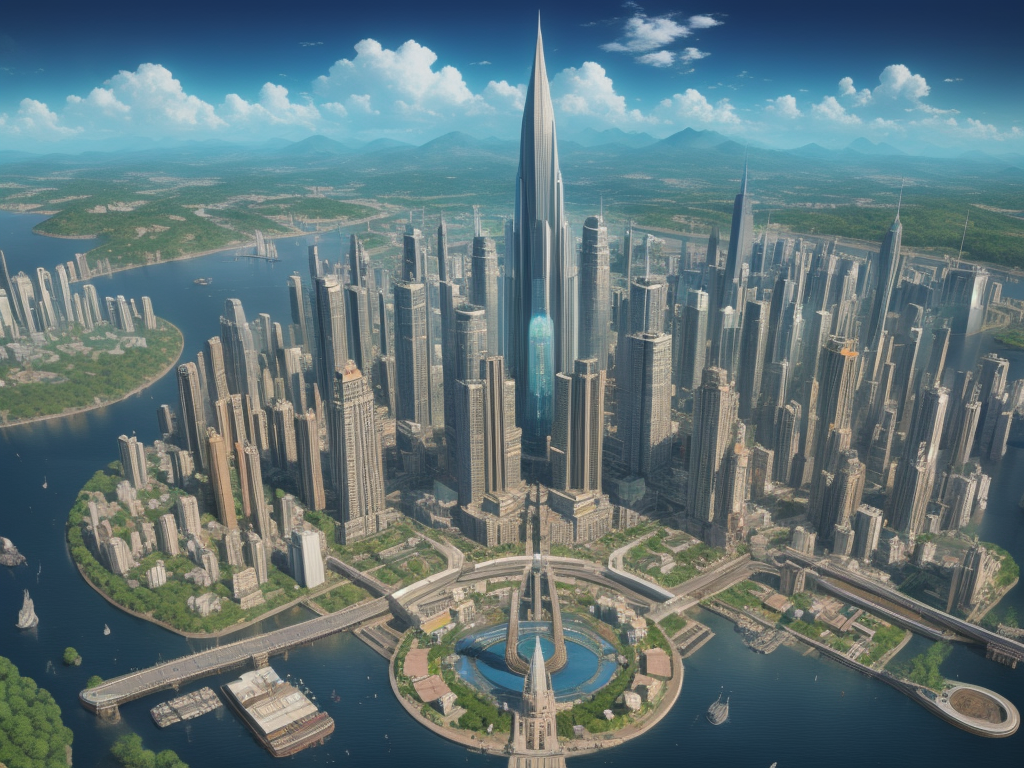Introduction: Understanding Inclusive Utopian Cities
In the realm of urban planning and social utopianism, the concept of an inclusive utopian city emerges as a blend of utopian ideals and practical inclusivity. These cities aim to create harmonious living environments where everyone feels valued and equipped to thrive, blending the ideal of a perfect society with the realities of diversity and inclusion.
What Are Inclusive Utopian Cities?
An inclusive utopian city is a social experiment designed to address societal inequalities while promoting harmony, equality, and well-being for all its inhabitants. Unlike traditional utopian communities that focus solely on eliminating social stratification, inclusive utopian cities emphasize both utopian ideals and practical inclusivity.
Key features of these cities typically include:
- Equitable Access: Ensuring equal access to resources, opportunities, and services for individuals regardless of their background.
- Community-Centered Design: Focusing on the collective well-being of residents rather than individual success.
- Innovative Infrastructure: Incorporating advanced technologies and design principles to support inclusivity and sustainability.
Key Features of Inclusive Utopian Cities
To achieve their goals, inclusive utopian cities integrate a range of features that blend utopian ideals with practical inclusivity:
- Universal Design for All
- Accessible Infrastructure: Providing ramps, elevator accommodations, and other features to ensure inclusivity for people with disabilities.
- Non-Voting Rights Integration: Eliminating voting rights in favor of universal suffrage or proportional representation to empower marginalized communities.
- Social Cohesion and Harmony
- Community Well-being Centres: Offering spaces for education, mutual aid, and cultural exchange to foster social cohesion.
- Mental Health Support Systems: Integrating mental health services into the urban fabric without stigmatizing mental illness.
- Environmental Sustainability
- Green Urban Planning: Designing cities that prioritize environmental sustainability through green spaces, renewable energy sources, and eco-friendly transportation.
- Sustainable Housing Models: Encouraging community-owned housing or cooperative living models to reduce reliance on market-driven real estate.
- Cooperative Living Spaces
- Cooperative Communities: Implementing systems where residents co-own properties or resources, fostering a sense of shared responsibility and equity.
- Hybrid Spaces: Creating areas that accommodate multiple lifestyles, from urban living to rural retreats, ensuring inclusivity across different needs.
- Technological Integration for Inclusivity
- Advanced Communication Systems: Enabling real-time communication networks that connect residents with essential services, regardless of their physical location.
- Inclusive Technology Access: Providing universal access to technology and digital tools through public libraries, community hubs, and other accessible points.
Challenges and Limitations of Utopian Cities
While the concept of inclusive utopian cities is compelling, it presents several challenges:
- Ideal vs. Reality: The vision of a perfect society is inherently idealistic and may not fully account for human variability and unexpected issues.
- Logistical Difficulties: Enforcing strict inclusivity across large urban areas with diverse populations can be logistically challenging.
- Funding and Support: Implementing comprehensive utopian city models often requires significant funding, which can be difficult to achieve without political or corporate backing.
Real-World Examples
- Hybrid Urban Models
- Cities like cohousing communities demonstrate how utopian principles can coexist with traditional urban planning. These cooperative housing projects offer shared living spaces where residents contribute equally to community building and maintenance, embodying both inclusivity and collective responsibility.
- Socially Inclusive Cities
- Countries such as Norway and Sweden are known for their social equity measures, offering universal healthcare, free education, and other basic services without financial barriers. These nations serve as blueprints for inclusive utopian design.
- City-Wide Resource Integration
- Singapore’s Model Community concept provides an example of how inclusivity can be integrated into urban planning by ensuring equal access to essential services like food, healthcare, and housing through a centralized social housing system.
Conclusion: The Future of Utopian Cities
Inclusive utopian cities represent the convergence of utopian ideals with practical inclusivity, aiming to create harmonious living environments where everyone feels valued and equipped to thrive. While challenges remain, the concept offers valuable lessons from hybrid urban models, socially inclusive societies, and universal resource integration.
By blending utopian aspirations with real-world solutions, these cities have the potential to inspire a new era of social harmony and well-being for millions of people worldwide. As we continue to explore these innovative models, it becomes clear that utopian ideals can indeed shape practical realities when approached with empathy, inclusivity, and a commitment to community.







